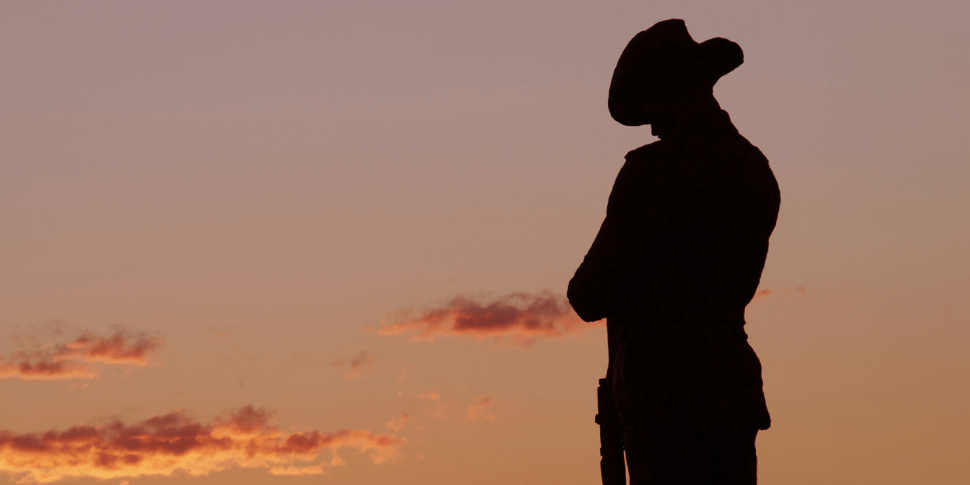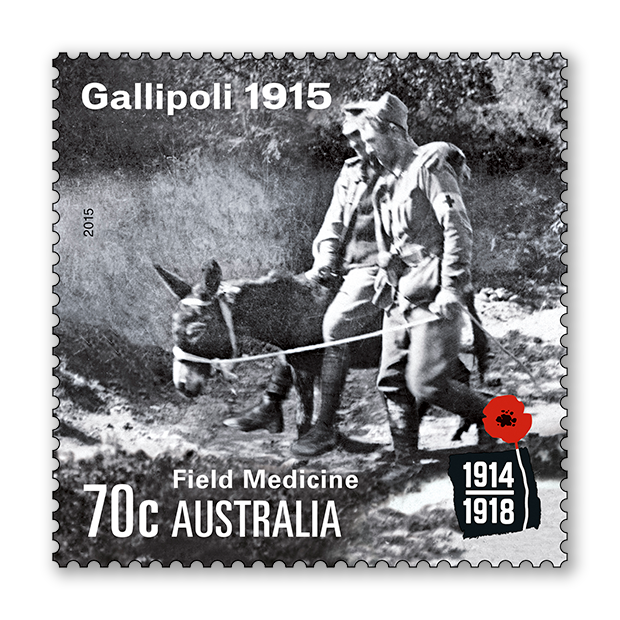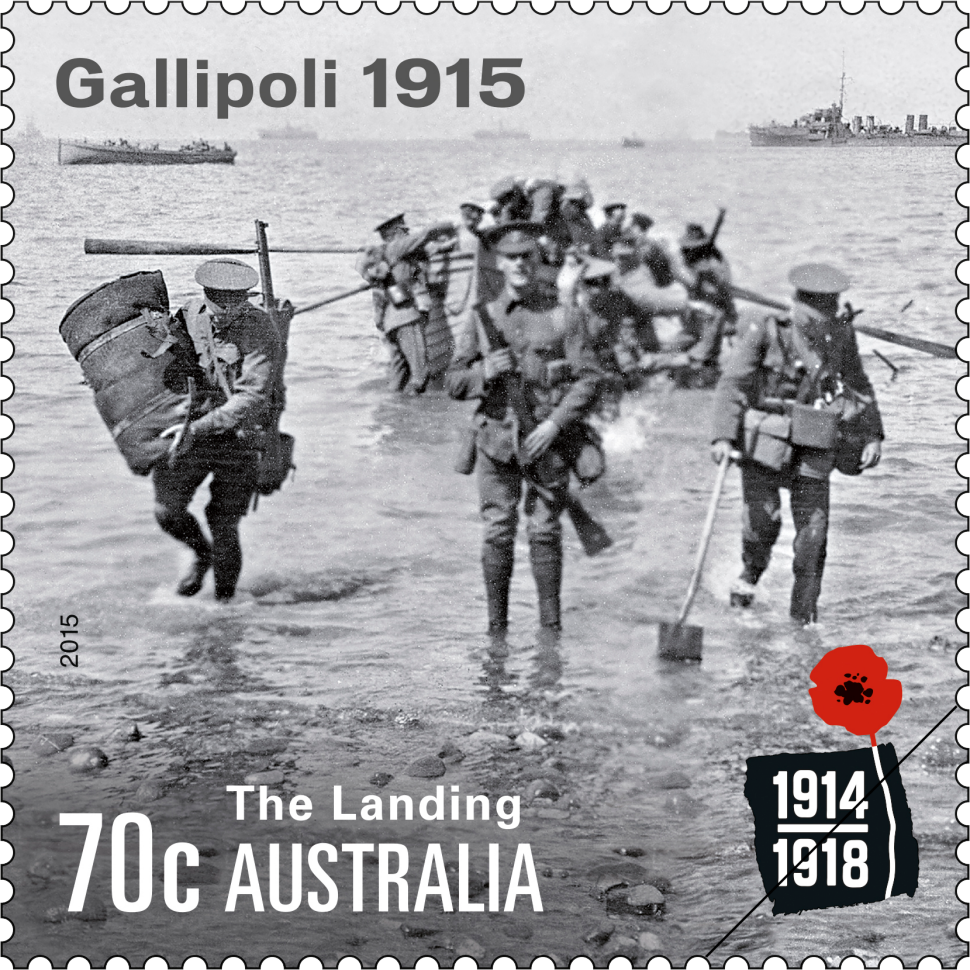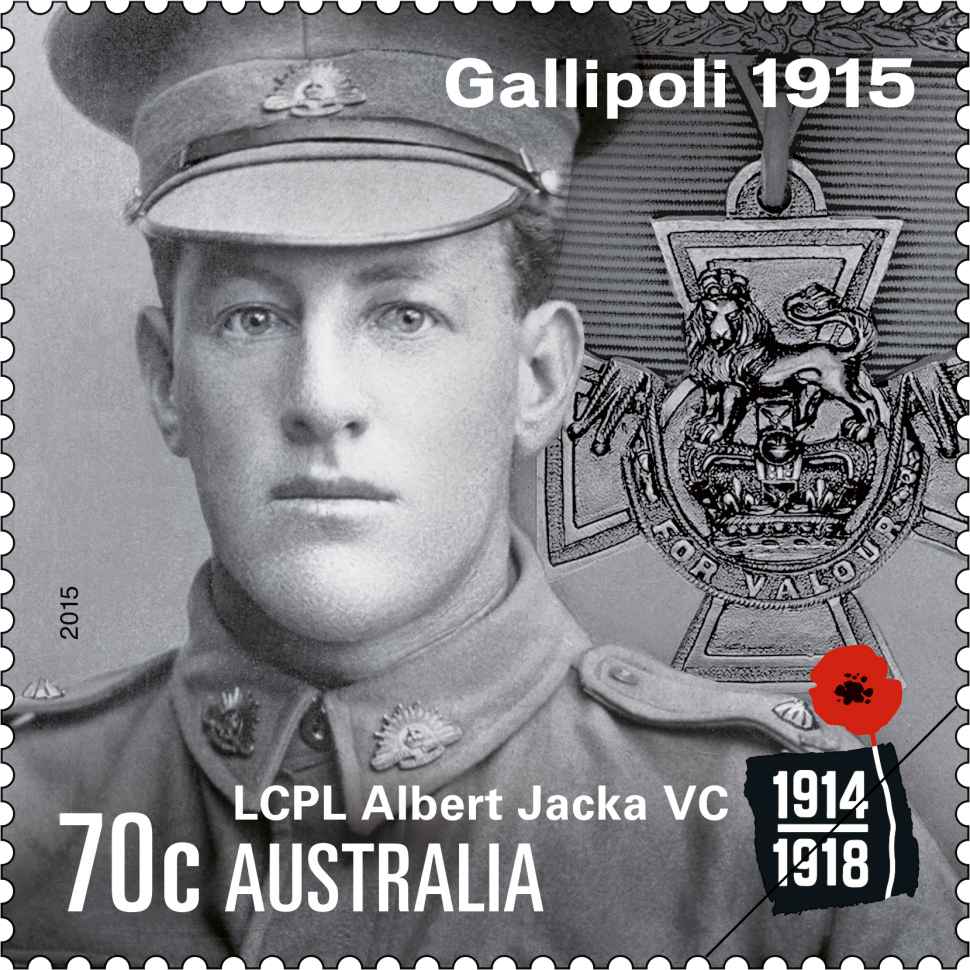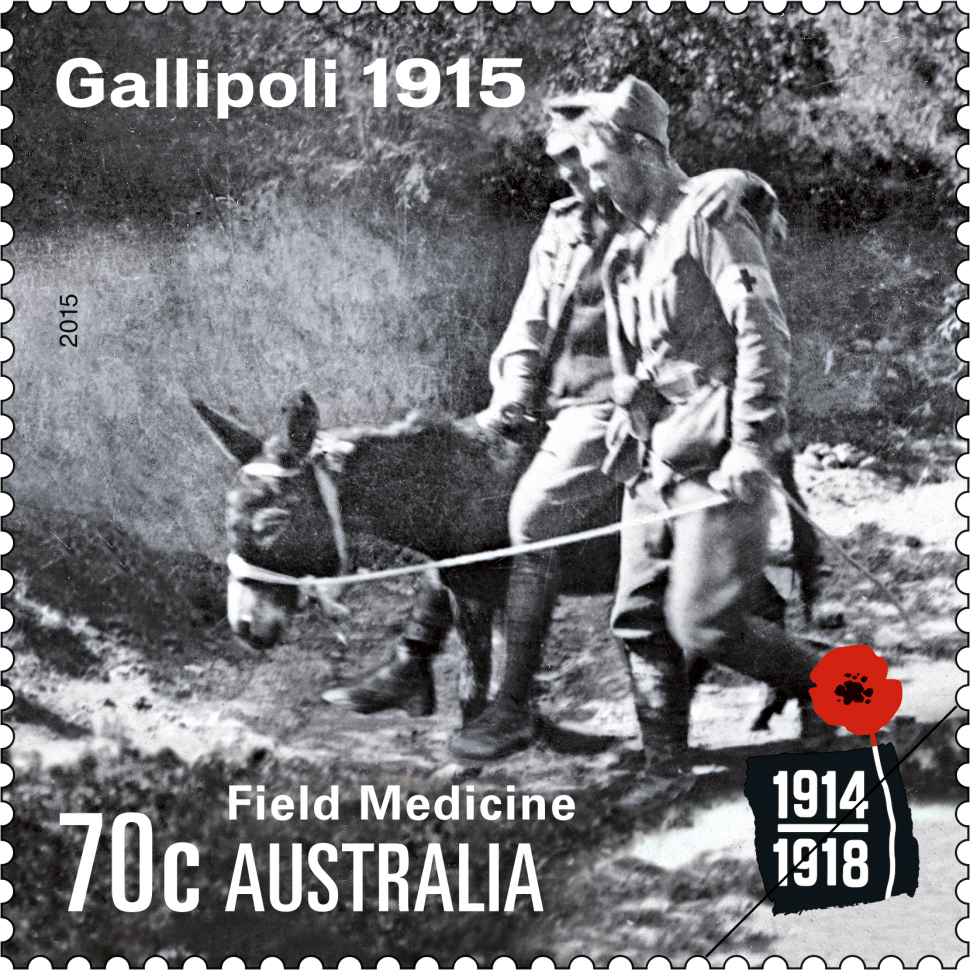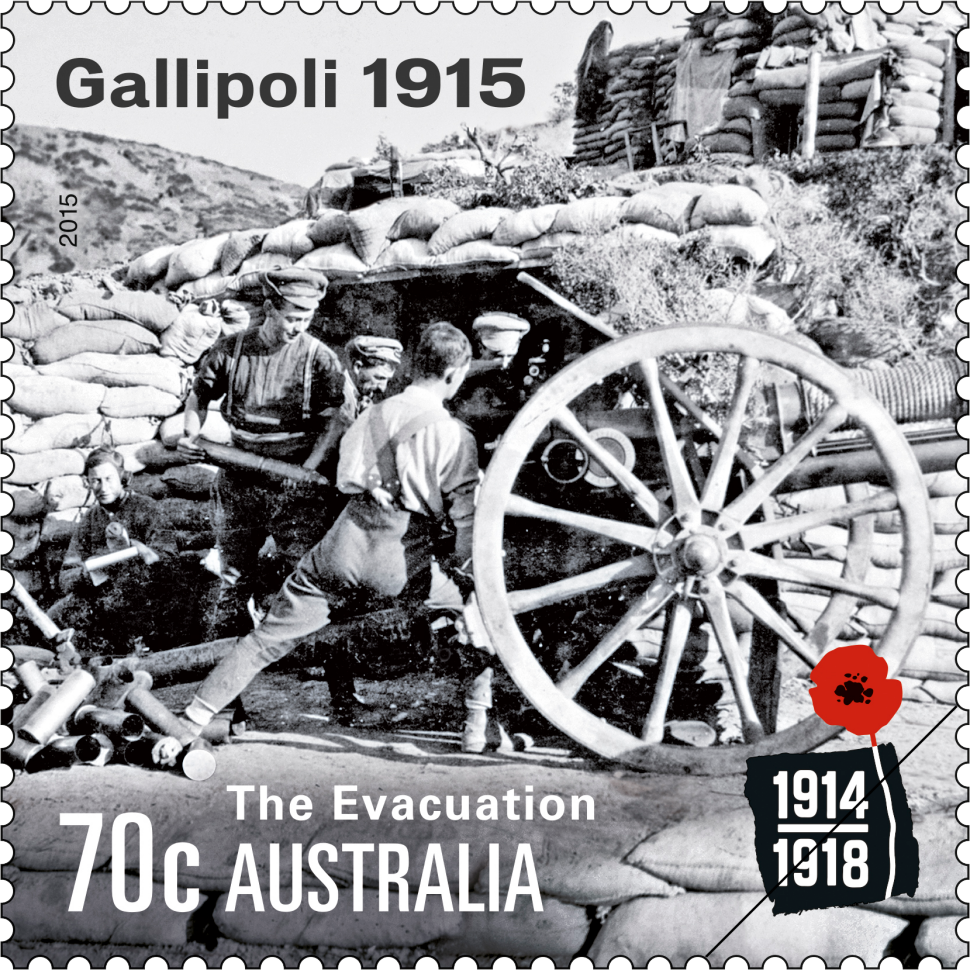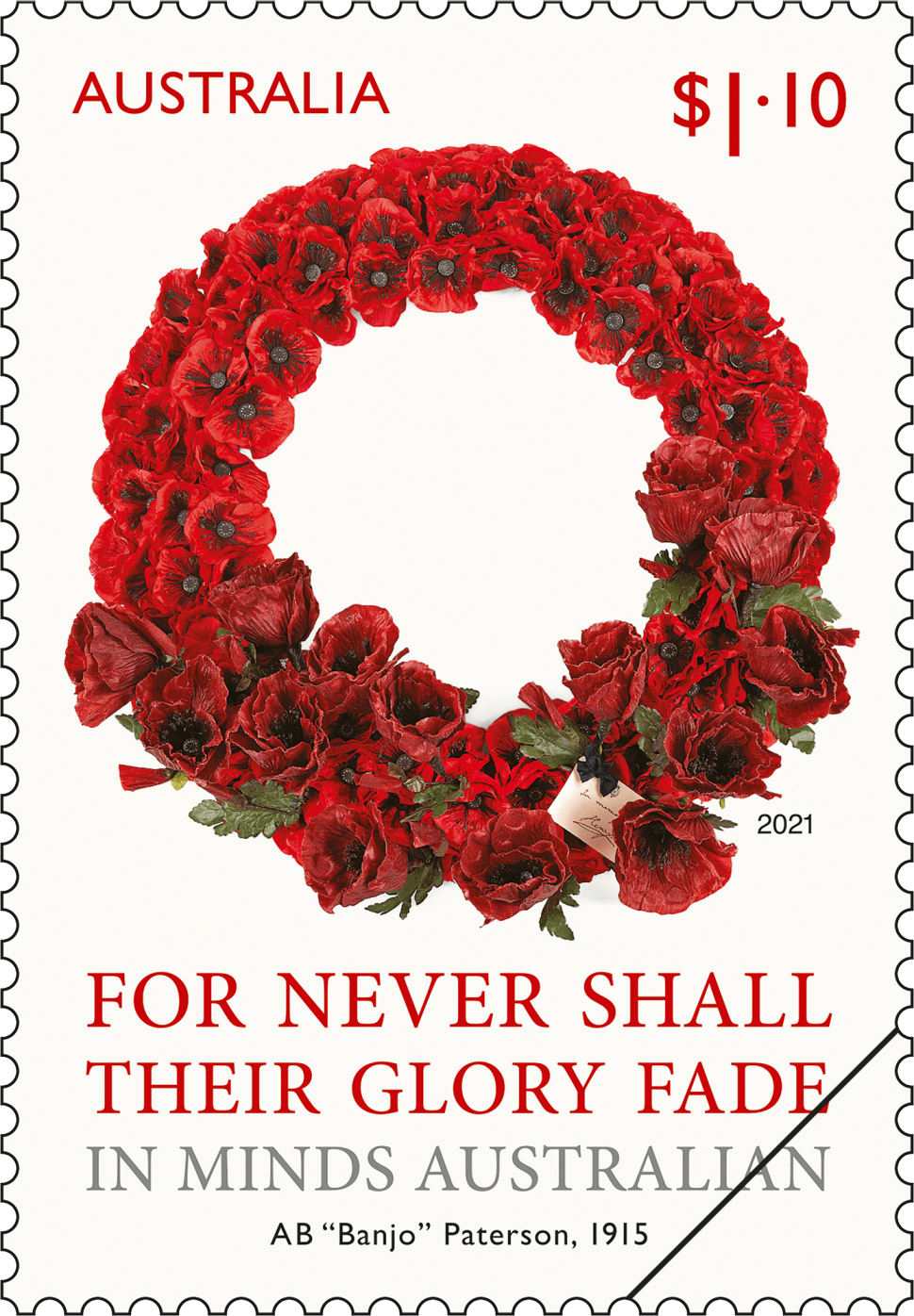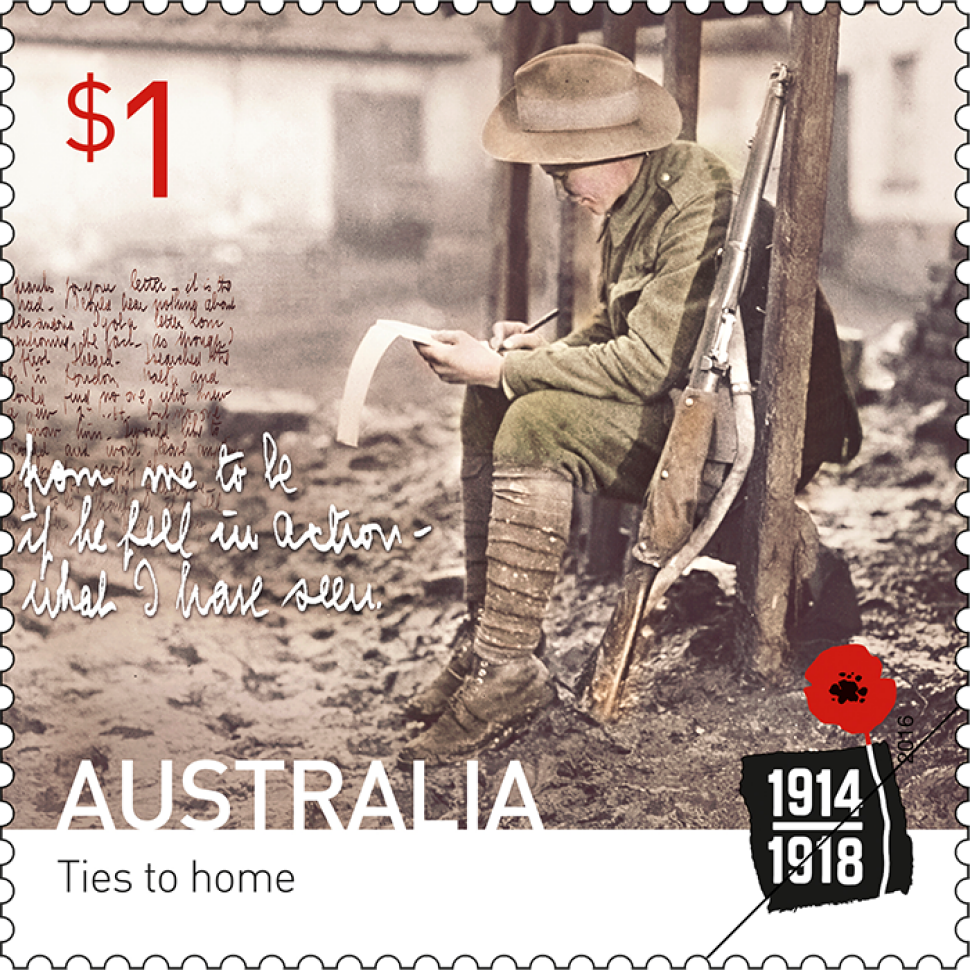This stamp issue is the second in a five-year series commemorating World War I, each issue relating the centenary year in which it is released. This second issue focuses on Gallipoli, a campaign that would in time be seen as crucial in shaping Australian national consciousness. The Gallipoli campaign falls into four phases: the landing, the Turkish counter-attack, the British offensive and the withdrawal. These events spanned the 25 April 1915 to 8 January 1916, and are represented on the stamps, along with field medicine.
The major theatre of war in which Australian troops were involved in 1915 was Gallipoli. They fought alongside New Zealand soldiers, with whom they trained in Egypt, and together were known as the Australian and New Zealand Army Corps (Anzacs). The objective of the campaign was to secure the Gallipoli peninsula, control the Dardanelles then take Constantinople. By defeating Turkey the allied forces sought to send aid to Russia and allow the Balkan armies to join them in defeating their mutual enemy in Europe. When the naval operation failed, ground forces were landed on the peninsula. The 1st Australian Division and the New Zealand Division were part of the ground assault, which was made up mainly of British and French troops.
In the early hours of 25 April, the Anzacs were directed to land north of the British and French troops on Gallipoli peninsula, at what became known as Anzac Cove. The inexperienced soldiers came ashore on a narrow beach below steep, ridged slopes on which the enemy waited. Turkish forces had been underestimated; as the Anzacs advanced from the beach the Turks sought to drive them back. By the end of the first day, some Anzac commanders suggested an evacuation, which was promptly denied. The strategy quickly shifted from taking territory to consolidating the small amount of ground gained. With little engineering and trench supplies, the men built tunnels and trenches under constant enemy fire and at close range in the constricting terrain. Allied weapons and ammunition were not suited to this form of combat, and when the enemy began lobbing grenades, the Australians countered with makeshift bombs made from jam tins filled with nails and explosives. Another invention was the improvised periscope rifle, which allowed soldiers to observe and fire at the enemy without having to expose themselves above the trench.
On 19 May, the Turkish forces orchestrated a counter-attack to push allied troops (now numbering about 42,000 in 4.5 divisions) into the sea. During the attack, Lance Corporal Albert Jacka helped repel a Turkish assault at Courtney’s Post, and his individual action helped recapture the position – an effort for which he was recognised with Australia’s first Victoria Cross of the war. The counter-attack was a major offensive but the Anzacs held fast to their territory, and around 7,000 Turkish soldiers were wounded and 3,000 killed. The stench in the summer heat was so intense that a nine-hour armistice was agreed in order to bury the dead.
During the long campaign, fatalities at Gallipoli were great on both sides, not only through combat but also by disease spread through dysentery, flies, lice and a poor diet. It has been estimated that by July 200 men a day on the allied side were being evacuated, though the challenge of evacuation meant many of the wounded never reached medical help in time. From the very start, hospital ships were anchored off-shore at Gallipoli, and makeshift ambulance marquees established at Anzac Cove. The wounded were also evacuated to hospitals and convalescent camps on the nearby Greek island of Lemnos and at Alexandria, Egypt. Private John Simpson Kirkpatrick, a stretcher-bearer in the 3rd Australian Field Ambulance, became a legendary figure for his part in tirelessly transporting wounded men from the frontline in Monash Valley to Anzac Cove on the back his little donkey, often working under fire. He was killed three weeks into his service. Australia suffered a total of 26,111 casualties during the campaign, with 8,141 men dying.
The British commander of the Dardanelles campaign, General Sir Ian Hamilton, ordered a new offensive to take territory in August 1915, in the northern sector of the Anzac position. A British landing would be also made to the north of Anzac Cove at Suvla Bay. The aim was to claim Sari Bair ridge from the Turks, and then to take the Narrows, on the other side of the peninsula. The Australian 1st Brigade made a diversionary attack at Lone Pine, a brutal battle that claimed more than 2,000 lives. It was, however, something of a success for the Australians. Fighting as infantry, the Australian Light Horse Brigade also made a diversionary attack at the Nek, but as the men repeatedly charged, cover fire failed and the men were mown down by their enemy. A further attack was made in the north at Hill 971, but that too failed. Soon after the failed August offensive, Sir Charles Monro replaced Sir Ian Hamilton in commanding the allied forces. Deeming success at Gallipoli unachievable, he recommended withdrawal, which was completed on 8 January 1916.
Products released in this issue
- Stamp (5 x 70c)
- Minisheet
- Covers (blank pictorial, gummed and minisheet)
- Stamp pack
- Gallipoli Collection stamp pack
- Maxicard (5)
- Postal numismatic cover (x 2)
- Stamp and medallion cover
- Prestige booklet (A5)
- Prestige cover
- Stamp medal
- S/A booklet of 10 x 70c
- Chequebook of 20 x 10 x 70c
- Gutter (10 x 70c) with design
Technical specifications
- Issue date
- 14 April 2015
- Issue withdrawal date
- 31 October 2015
- Denominations
- 5 x70c se-tenant
- Stamp design
- Janet Boschen Design
- Product design
- Janet Boschen, Boschen Design
- Printer
- Ego
- Paper - gummed
- Tullis Russell
- Paper - self-adhesive
- B100
- Printing process
- Lithography
- Stamp size
- 35mm x 35mm
- Minisheet size
- 170mm x 80mm
- Perforations
- 14.28 x 14.28
- Sheet layout
- Module of 50
- FDI postmark
- Liverpool, NSW 2170
- FDI withdrawal date
- 13 May 2015
In the early hours of 25 April 1915, ground forces landed on the Gallipoli peninsula in an effort to secure the Dardanelles. Anzac troops landed on the beach at what became known as Anzac Cove. Charles Bean, the Australian official correspondent, took photograph shown in this stamp design. He photographed Divisional Headquarters staff coming ashore as he himself landed.
Photo: Australian War Memorial G00903
This stamp design shows Lance Corporal Albert Jacka of the 14th Battalion, who here represents the Turkish counter-attack phase of the campaign, which occurred in May 1915. Jacka became the first Australian recipient of the Victoria Cross during the war, a distinction gained for his bravery in recapturing a trench at Courtney’s Post taken by seven Turkish soldiers, five of whom he killed and two he wounded.
Photo: Australian War Memorial A03408
In this stamp design, Australian troops of the 1st Brigade are shown in Turkish trenches seized during the fighting at Lone Pine, carried out under the command of Brigadier General Harold ‘Hookey’ Walker. Lone Pine was taken on the afternoon of 6 August 1915, and was one of the diversionary attacks during the failed August offensive.
Photo: Australian War Memorial A02022
Englishman Private John Simpson Kirkpatrick of the 3rd Australian Field Ambulance represents field medicine at Gallipoli in this stamp design. He and his faithful donkey (possibly more than a single donkey) – variously known as Duffy, Abdul and Murphy – recovered many wounded soldiers from the frontline. Simpson was known at Gallipoli for his bravery and independence in rescuing the wounded. He was killed during service on 19 May, just three weeks after landing at Gallipoli.
Photo: Australian War Memorial A03114
This content was produced at the time of the stamp issue release date and will not be updated.
